En los navíos de guerra españoles de los siglos XVII y XVIII solían usar banderas enormes para verse desde varias leguas de distancia. El poder naval que tenía la marina española en esa época hacía que el enemigo les pusiera la popa antes de presentar batalla. Pero en caso de ataque era la señal de que el buque sigue luchando y no se rinde.
Spanish warships of the 17th and 18th centuries used huge flags so that they could be seen from leagues away. The naval power of the Spanish navy at that time meant that the enemy would put the stern on them before they would present a battle. But in case of attack it was a sign that the ship was still fighting and would not surrender.
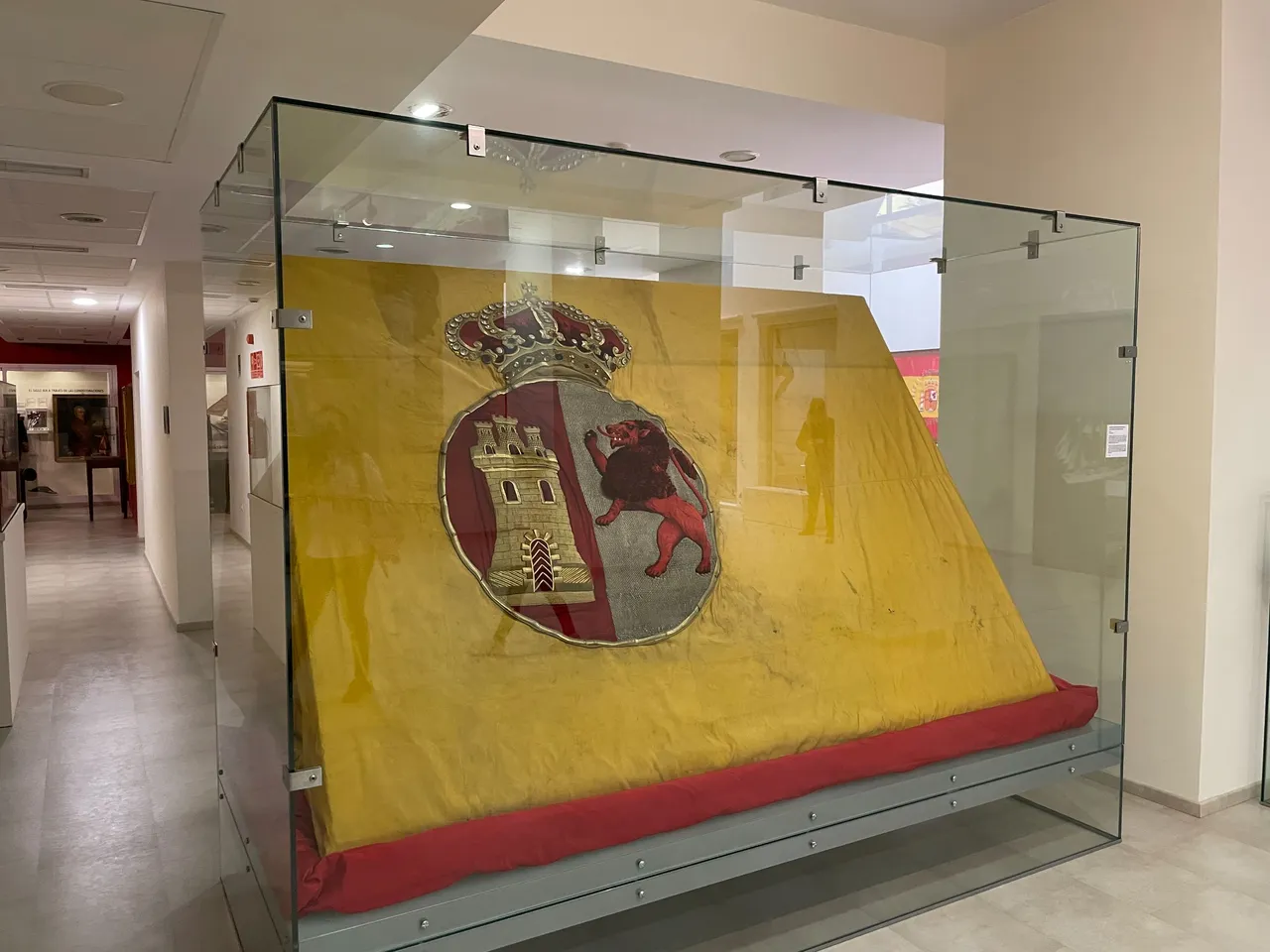

Este pabellón nacional del siglo XIX, mide diez metros de largo hecha de seda, hilos de oro y piedras semipreciosas. Con el tiempo dejaron de ser tan grandes y aun así todavía lo eran.
This 19th century national flag is ten metres long, made of silk, gold thread and semi-precious stones. In the course of time they were no longer so large, and yet they still were.
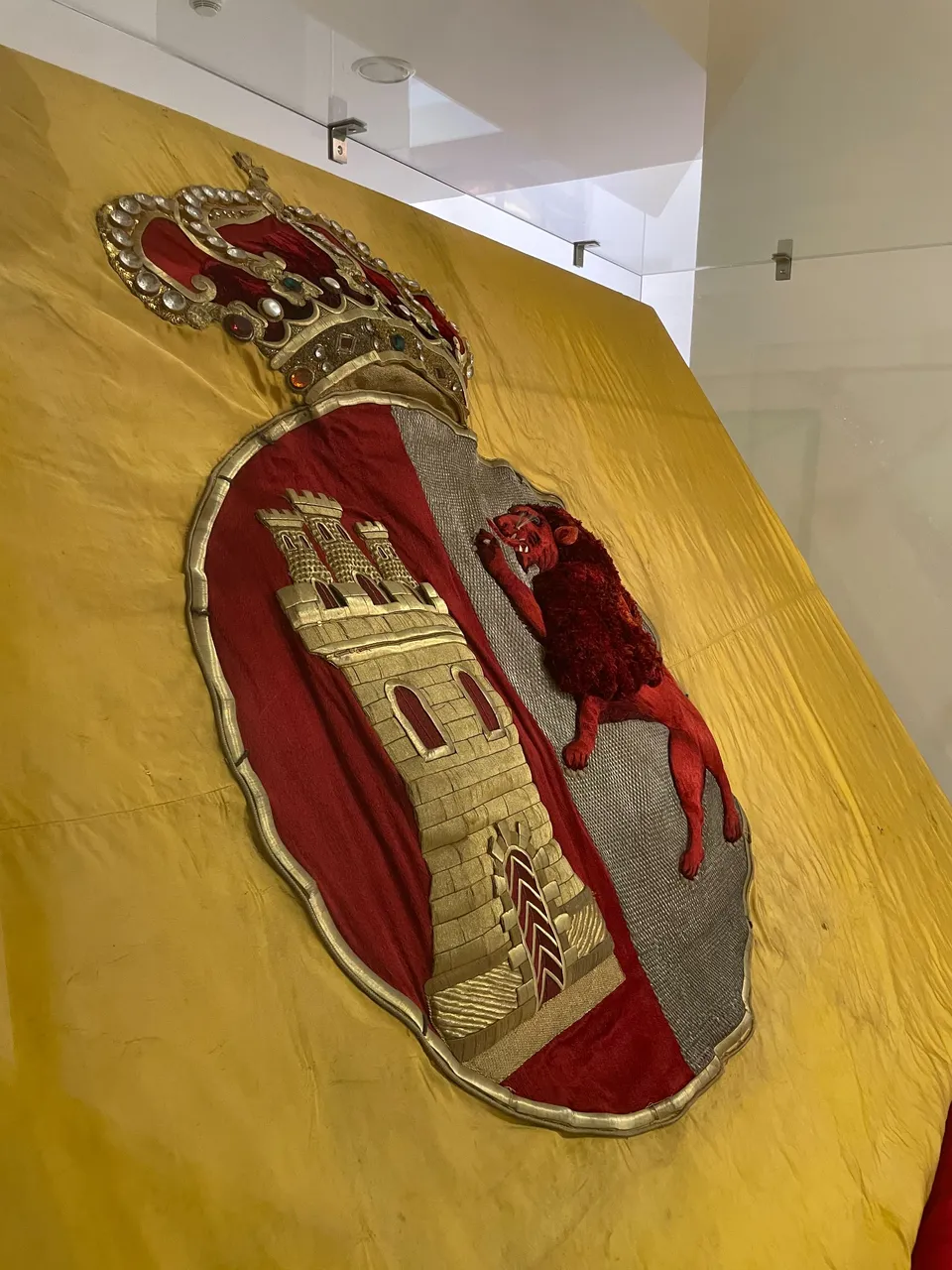

Otro pabellón de combate expuesto en el museo naval de San Fernando. Se puede ver como se ha descolorido a causa del sol y el tiempo.
Another battle flag on display in the Naval Museum of San Fernando. You can see how it has faded due to the sun and time.
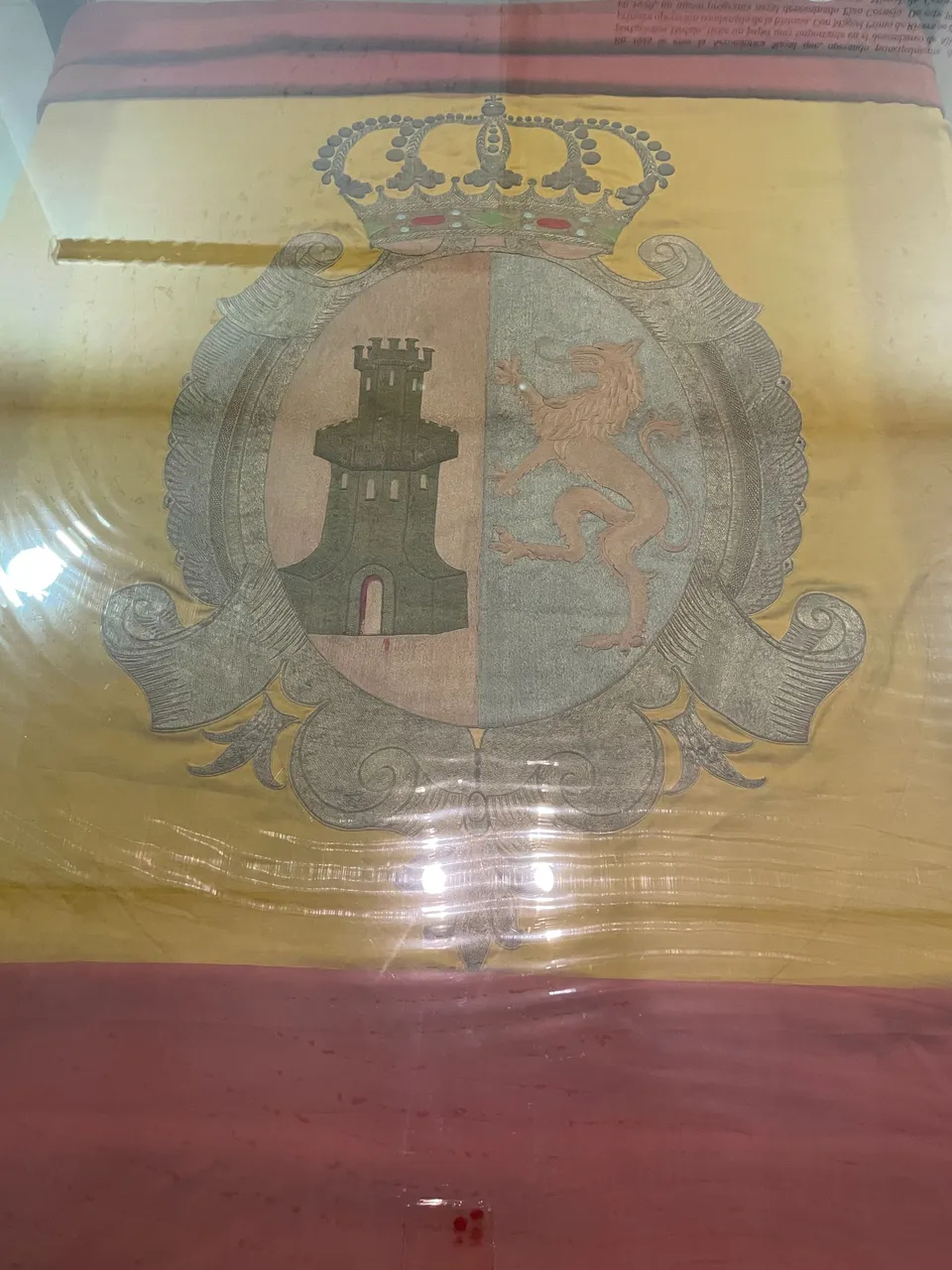

En el cuadro del maestro Augusto Ferrer Dalmau, "Mi Bandera" podemos apreciar la importancia del Pabellón Nacional en un combate naval. En el momento que sea arriada el barco se da por rendido y dejan de luchar.
En el combate del Cabo San Vicente contra la escuadra británica este infante defiende con su vida el pabellón de combate. Aquí podéis ver una imagen de una copia del cuadro, expuesta en el museo.
Este infante cayó malherido y el buque quedó en manos británicas. La heroicidad llegó a oídos de Nelson, fue curado y recobró la libertad al llegar a un puerto de Portugal.
In the painting by the master Augusto Ferrer Dalmau, "Mi Bandera" (My Flag) we can appreciate the importance of the National Flag in a naval combat. The moment it is lowered, the ship is considered to have surrendered and they stop fighting.
In the battle of Cape San Vicente against the British squadron, this infantryman defended the battle flag with his life. Here you can see an image of a copy of the painting, on display in the museum.
This infantryman was badly wounded and the ship was left in British hands. The heroic deed reached Nelson's ears, he was cured and regained his freedom when he reached a port in Portugal.
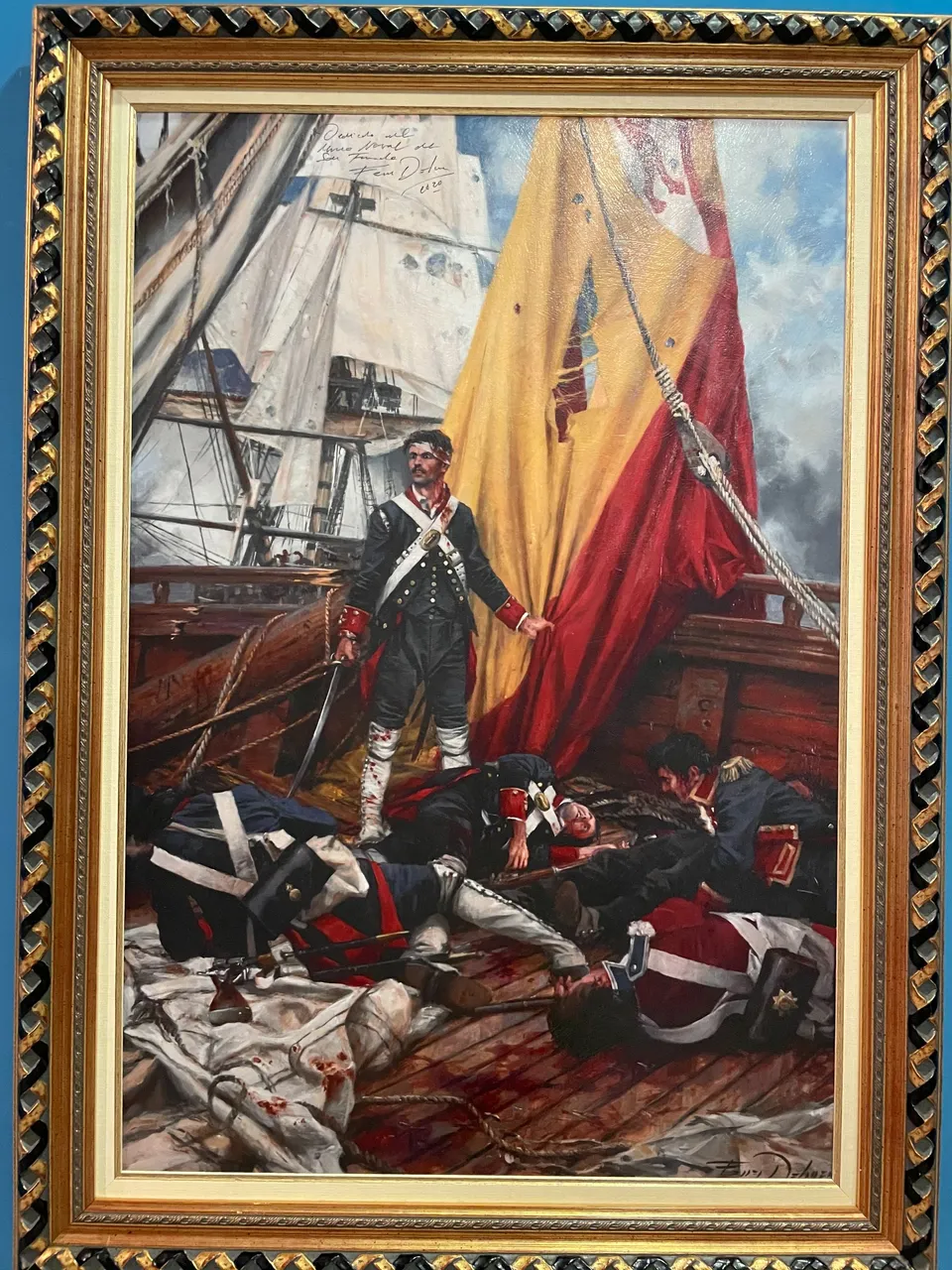

Aquí podemos ver una maqueta del navío español "Santísima Trinidad" con el pabellón de combate. Realmente era mucho más grande del que se representa en el modelo expuesto.
Here we can see a model of the Spanish ship "Santísima Trinidad" with the battle flag. It was actually much larger than the one depicted in the model on display.
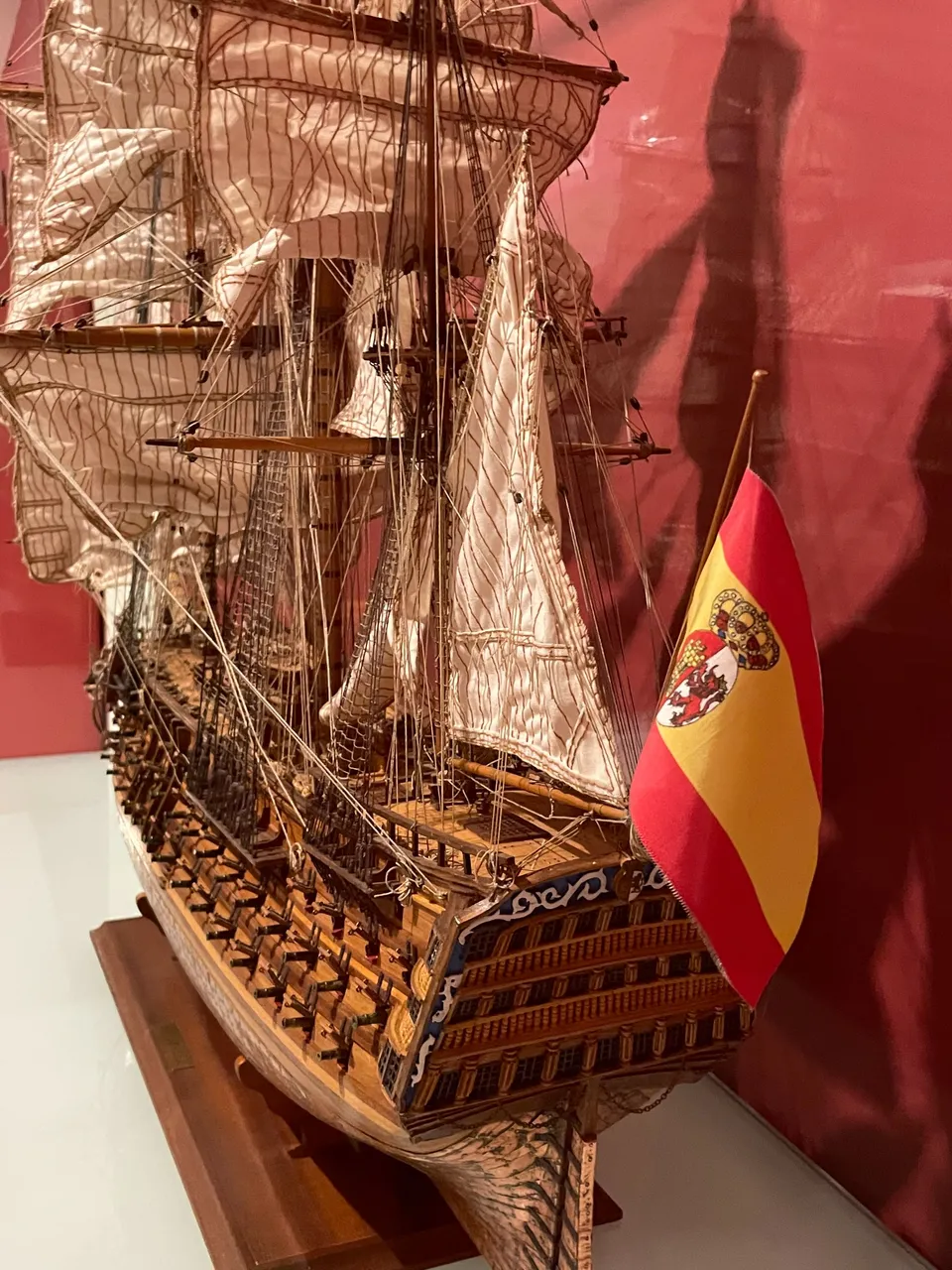



Con el tiempo llegaron avances tecnológicos como la radio y el radar donde dejó de ser necesario pabellones enormes.
As time went by, technological advances such as radio and radar made huge flags unnecessary.



